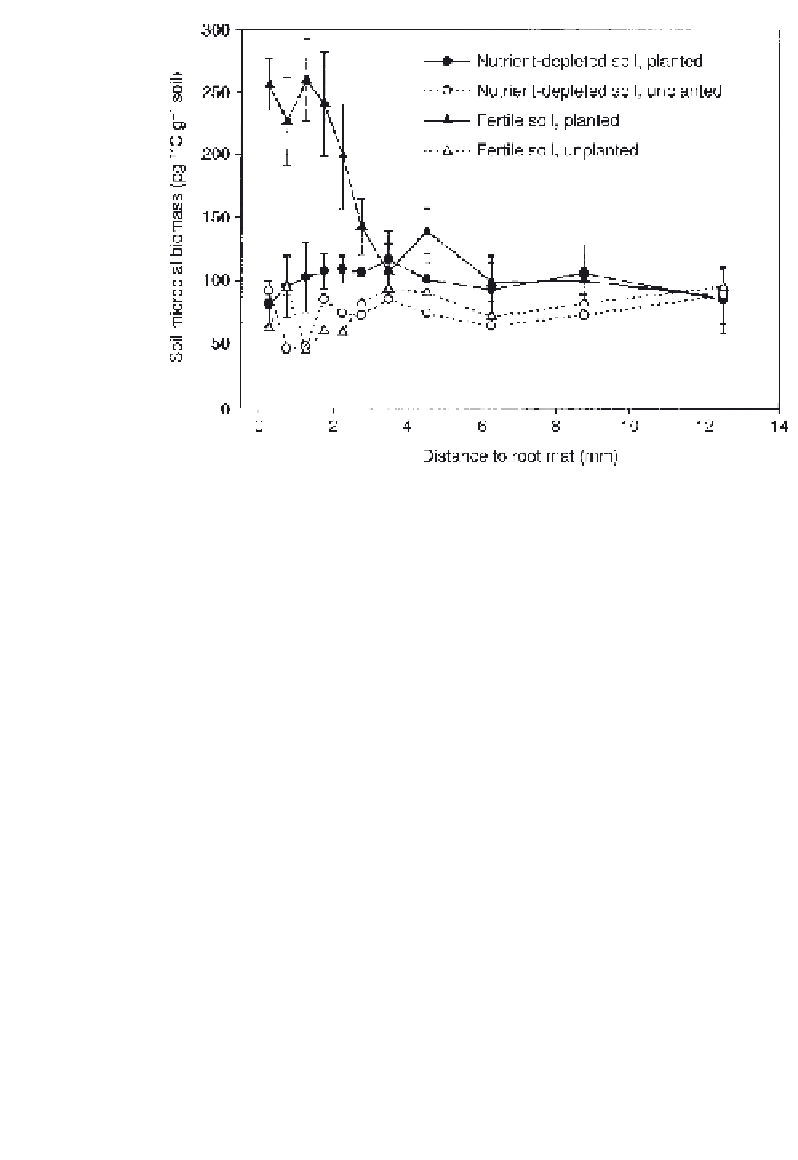Agriculture Reference
In-Depth Information
Fig. 5.5.2.
Soil microbial biomass
14
C at increasing distance from the root mat. Bars indicate
SE
(n= 4).
from labelled SOM was suppressed in the presence of living roots (e.g.
Jenkinson, 1977; Sparling
et al
., 1982; Martin, 1987), while others (Helal
and Sauerbeck, 1986; Sallih and Bottner, 1988; Cheng and Coleman,
1990) found a stimulatory effect. In this experiment, the increase in SMB
14
C in the rhizosphere of the
fertile
soil clearly showed that carbon was
moved from a pool that was not extractable after fumigation, to one that
was. Two possible explanations exist: (i)
14
C-labelled SOM was taken up
by the SMB, and hence decomposed (a priming effect); or (ii)
14
C-labelled
microorganisms in a dormant state were revitalized by the exudates, and
became prone to fumigation. The total changes in soil
14
C were not
significant in this short experiment and it is uncertain whether the roots in
the long term would have exerted a priming effect on the SOM. Different
changes in soil biological and physical factors induced by roots, depending
on experimental set up, may explain the conflicting results in the literature
(Cheng and Coleman, 1990; Dormaar, 1990). The complexity of the
situation is accentuated by the fact that no significant priming effect was
found in the
nutrient-depleted
soil. We propose three explanations: (i) the
SMB was nutrient limited which hampered decomposition of the labelled
SOM; (ii) the SMB in the
nutrient-depleted
soil was not capable of
decomposing the
14
C bound in microbial residues; and (iii) unlike in the
fer-
tile
soil, dormant SMB in the
nutrient-depleted
soil was not brought back into
an active state. The first explanation appears unlikely since microbial resi-
dues
would
contain
the
necessary
nutrients
for
microbial
growth.











Search WWH ::

Custom Search